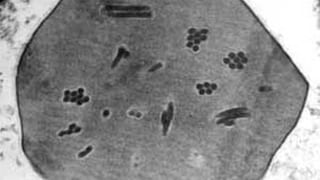
Invisible Viruses in Everyday Food
Most people get a daily dose of virus in the form of plant or insect viruses that are harmless to humans. Consuming the occasional plant or insect virus should be the least of our worries.

Most people get a daily dose of virus in the form of plant or insect viruses that are harmless to humans. Consuming the occasional plant or insect virus should be the least of our worries.

The detection of 10 new citrus greening disease cases in California citrus trees weighed heavily on attendees of a recent citrus greening research meeting.

BTI researchers Harrison and Floss collaborate with Cornell physicists to understand how roots grow around barriers in the soil, while still heading down.

Researchers have found that salicylic acid targets the activities of HMGB1, an inflammatory protein associated with a wide variety of diseases, offering hope that more powerful aspirin-like drugs may be developed.

Hartz serves on the BTI Board of Directors where he advises and oversees the financial and administrative aspects of BTI. He also acts informally as an Ithaca representative, maintaining the strong connection between BTI and the local community.

“There is such a disconnect between what the average person knows about plant science and what we do in the lab here…I think it’s really important to be able to talk to anyone about what I do in a way that they understand.”

Harrison Lab has discovered that plants use EXO70I to form a membrane around the fungus in arbuscular mycorrhizal (AM) symbioses, beneficial associations where plants receive phosphate from fungi in exchange for carbohydrates.

BTI Researchers pinpointed which genes are important at different stages of tomato fruit development by monitoring how gene expression changed in the first four days after a flower becomes pollinated.

“My experience was really valuable…It confirmed the fact that I want to do science…science doesn’t work a lot of the time…it’s having the motivation and determination to tackle problems that you’re always going to come across.” Juan G

To promote innovative research and collaboration, the Boyce Thompson Institute for Plant Research and the American Society of Plant Biologists are pleased to announce the formation of the Plant Science Research Network.

Fourteen teachers arrived at BTI from schools as close as Ithaca and as far as Anaheim, Calif. to attend the BTI Plant Biology Curriculum Development Projects (CDP) Teacher Institute July 13-17, 2015

Science teachers planted switchgrass seeds, sampled algae-glycerin soap, and participated in roleplaying activities at the Bioenergy and Bioproducts Education Program’s National STEM conference last week in Horseheads, N.Y.

When plants detect pheromones given off by nematode worms, they activate their immune system for protection. The chemical warning not only triggers defenses against nematodes, but also against bacterial, fungal and viral infection.

Professor James Giovannoni, “There’s a great deal of diversity that’s still available from these varieties that potentially have a lot of useful traits, including tolerance to stresses and important fruit traits.”
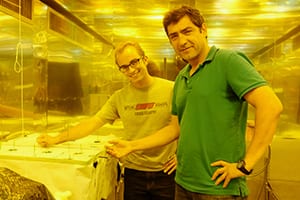
Summer internships at BTI let students try on the life of a scientist for a few months, while attending a variety of talks, trainings and social events. But what’s in it for the mentors, who painstakingly train them?
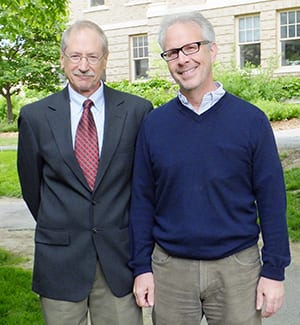
“The more we understand the molecular mechanisms involved in the infection process and in plant resistance, the more effective we’re going to be in breeding resistant crops,” said Professor Greg Martin.

A diverse group of researchers has teamed up to develop a therapeutic treatment for citrus greening disease, a bacterial infection that threatens the future of the U.S. citrus industry.

Some interns, like Cornell University first-year student Felix Fernandez-Penny, enjoy their time at BTI so much that they keep showing up at the laboratory, long after the summer ends.

BTI welcomes 20 college-level interns for 10 weeks of research in Plant Genome Research Program, the Bioinformatics Program or the Bioenergy Education Program.

Researchers discover the genetics behind high-yield cucumbers that bear all-female flowers by screening 115 genome sequences to find large chromosomal variations.

EPA has granted temporary approval of two genes from spinach to be used in citrus plants. “There is a critical need to go beyond citrus to find novel resistance genes that provide protection…”
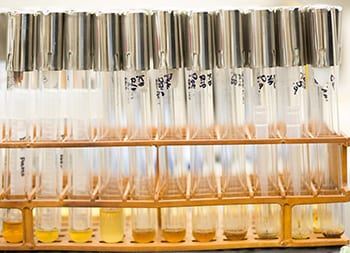
New research from the laboratory of BTI Professor Daniel Klessig finds that salicylic acid, or SA, plays a role in resistance to tomato bushy stunt virus or TBSV by blocking viral replication.

BTI Professor Emeritus Robert Kohut initiates competition at BTI to give early-career scientists an opportunity to communicate with the general public and practice their “elevator speech.”

A new compound could make rice more weed-resistant. Researchers in the Jander laboratory first discovered b-tyrosine while looking for new defense compounds in rice.

Marshall Tyler nominated Maria Harrison for the 2015 Cornell University College of Agriculture and Life Sciences Faculty Excellence in Undergraduate Research Mentoring Award.

BTI Professor Lukas Mueller will participate in an international collaboration to expedite crop breeding for five worldwide staple crops—wheat, rice, maize, sorghum and chickpea.

Postgraduate Society members at BTI host EYH (Expanding your Horizon) workshop to help girls understand genetics and feel more comfortable in the world of science.

BTI President and CEO David Stern visited Arizona April 14-16 to attend the Boyce Thompson Arboretum board meeting and to speak about algae-derived bioproducts and his own algal biofuel research, at Chandler-Gilbert Community College.

The discovery of the role of this ammonium transporter improves the understanding of how the plant and fungal partners regulate the symbiosis and how phosphate and nitrogen move through the system.

Professor Maria Harrison is the 2015 winner of the Dennis R. Hoagland Award from the American Society of Plant Biologists, given every three years, for her outstanding work on plant mineral nutrition.

Research Associate Amber Hotto and colleagues, working in the laboratory of BTI President David Stern, have characterized the first RNase III enzymes that function within chloroplasts.
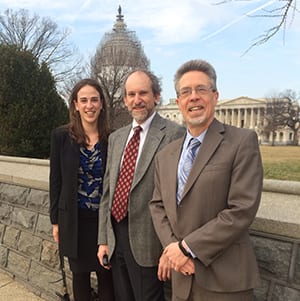
BTI President David Stern traveled to Washington D.C. last week to advocate for increased federal support for plant research for the 2016 fiscal year; Unleashing a Decade of Innovation in Plant Science.

James Eaglesham began his career as an intern at BTI, and heads to the University of Cambridge, England as a Churchill scholar for pathology research. When back in US, Eaglesham will pursue his doctorate in virology at Harvard, in Cambridge, MA.

Two attendees of BTI’s summer teacher workshops travelled to the Emerging Researchers National Conference in STEM to present an algal photobioreactor laboratory, designed in BTI labs, for community college and middle school science students.

Patricia Pinheiro was drawn to the study of insects like a moth to flame. As a grad student in the Cornell Entomology Department and Assistant Professor Michelle Cilia’s lab, Pinheiro studies insects that feed on plants and transmit pathogens.
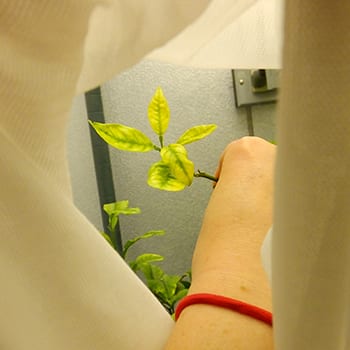
Assistant Professor Michelle Cilia and four members of her lab attended the International Conference for Huanglongbing. They joined hundreds of other researchers in Orlando, Fla. Feb. 9-13, to present their research on this disease.
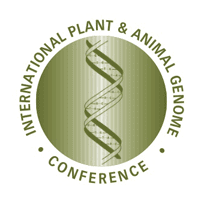
BTI researchers attended, presented and led workshops at 23rd Annual Plant Animal Genome Conference (PAG) 2015 in San Diego.

“Biology is becoming a data science,” said Ruiz. “Biologists need to learn to use bioinformatics tools.”

The Yambase database will allow users to access the yam genome browser hosted by the Iwate Biotechnology Research Center in Japan and will house information about desirable yam characteristics and tools for breeders.


Professor Georg Jander has seen that, when attacked, plants react at the molecular level. Jander’s dedication—to plant science and people—seems to be contagious.

Dr. Patrick Boyle will be an “Emerging Leader in Science” after four years as a Postdoctoral Scientist in Professor Gregory Martin’s Lab at BTI.

Georg Jander, Michelle Cilia and Angela Douglas organized Hemiptera (sucking insects) conference held on December 4, 2014.

This study pinpoints regions of the tomato genome where extra DNA has hitchhiked along with desirable DNA; regions breeders can now target for crop improvement.

BTI professors David Stern, Zhangjun Fei, and Lukas Mueller were able to brief Bill Gates and his team on their Gates funded projects and issues of biotechnology and plant science while he was at Cornell on October 1, 2014.

$3 Million cross-cutting interdisciplinary High-Risk, High-Reward research project taps into unexplored source of antimicrobial compounds.

Graham Thiele, RTB Program Director at CGIAR Research Program on roots, tubers, and bananas recently met with Boyce Thompson Institute’s Lukas Mueller to plan expansion of bioinformatics platforms and databases.

BTI collaborates with Tompkins Cortland Community College (TC3) to host Biology 101. The relationship is symbiotic, and BTI postdocs gain valuable teaching experience.

Speakers will include Dr. Frank Schroeder, postdocs Daniela Floss and Patricia Manosalva, Dr. Robert Granados and Dr. Maureen Hanson (from Cornell), and discussion of postgraduate training and education with Dr. David Stern and Dr. Eric Richards.

Jocelyn Rose, professor of plant biology and director of Cornell’s Institute of Biotechnology, with BTI co-PI’s Carmen Catala, Zhangjun Fei, James Giovannoni, and Lukas Mueller will research ripening mechanisms & drought tolerance.